At Studio Outside, we take pride and joy in being good stewards of our city not just through designing landscapes, but also through maintaining them. Over the past year and a half, we’ve had the opportunity to assist in the maintenance of two of our built projects in addition to starting an annual cleanup in our office’s neighborhood. Everyone deserves well-designed and maintained landscapes, but they can be challenging to come across in Dallas' beautiful yet underinvested southern half, where all of these efforts took place.
South Oak Cliff Renaissance Park
Studio Outside recently worked with The Trust for Public Land (TPL) and The Nature Conservancy to design South Oak Cliff Renaissance Park, the first park within the Five Mile Creek Greenbelt Master Plan. Now open, it is located along the Alice Branch Creek and connects South Oak Cliff High School to the newly opened Honey Springs-Cedar Crest Trail. After TPL purchased the land, Studio Outside transformed the space from an illegal dumping site into a park that now serves as a community space, playground, and place to immerse oneself in nature.
Among the South Oak Cliff (SOC) community, Alice Branch Creek has been considered a nuisance for years. Due to a lack of care and maintenance, the waterway has a reputation for harboring trash and stench. However, SOC Renaissance Park is beginning to transform the creek into a neighborhood asset. Shortly before the park's opening, Studio Outside conducted a day of invasive plant removal. With several hand saws, a chainsaw, and a lot of sweat, we cut down and hauled away hundreds of invasive trees and shrubs that were blocking sunlight from reaching the forest floor. Their removal set the stage for a successful seeding of native understory grass and wildflower species along the creek’s banks and floodplain. The forest’s now regenerated understory will help filter rainwater, improving the creek’s water quality downstream.
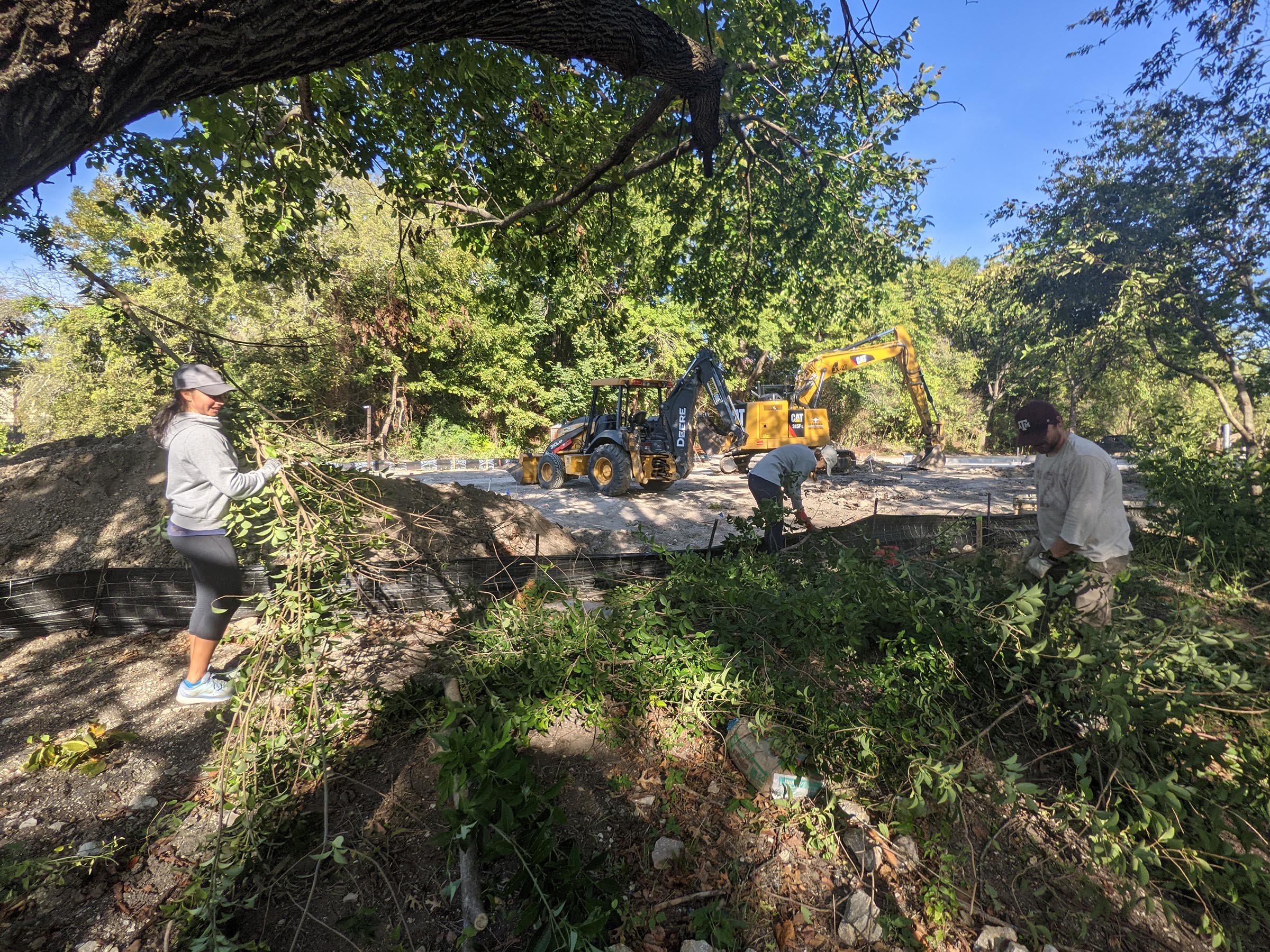
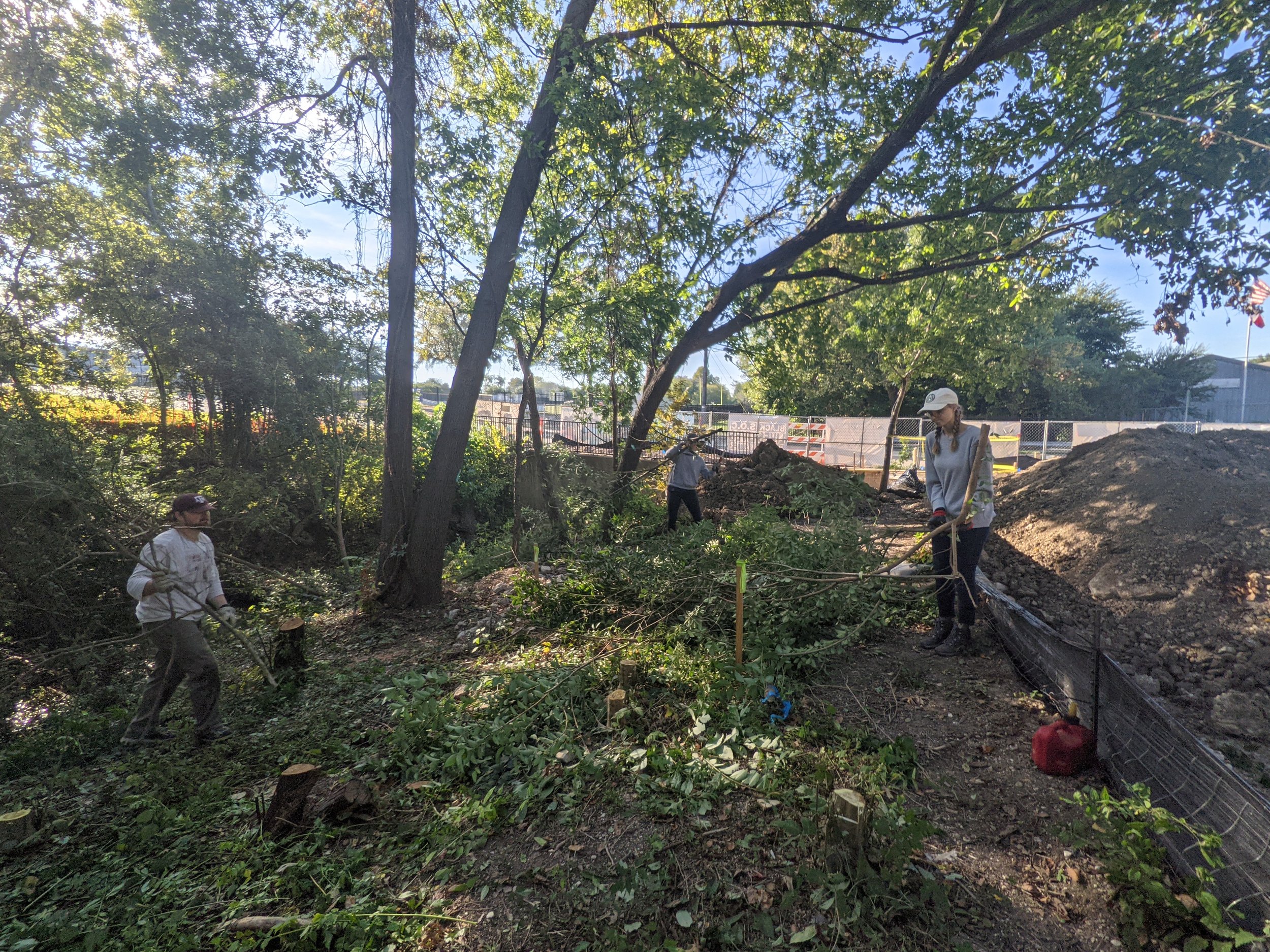
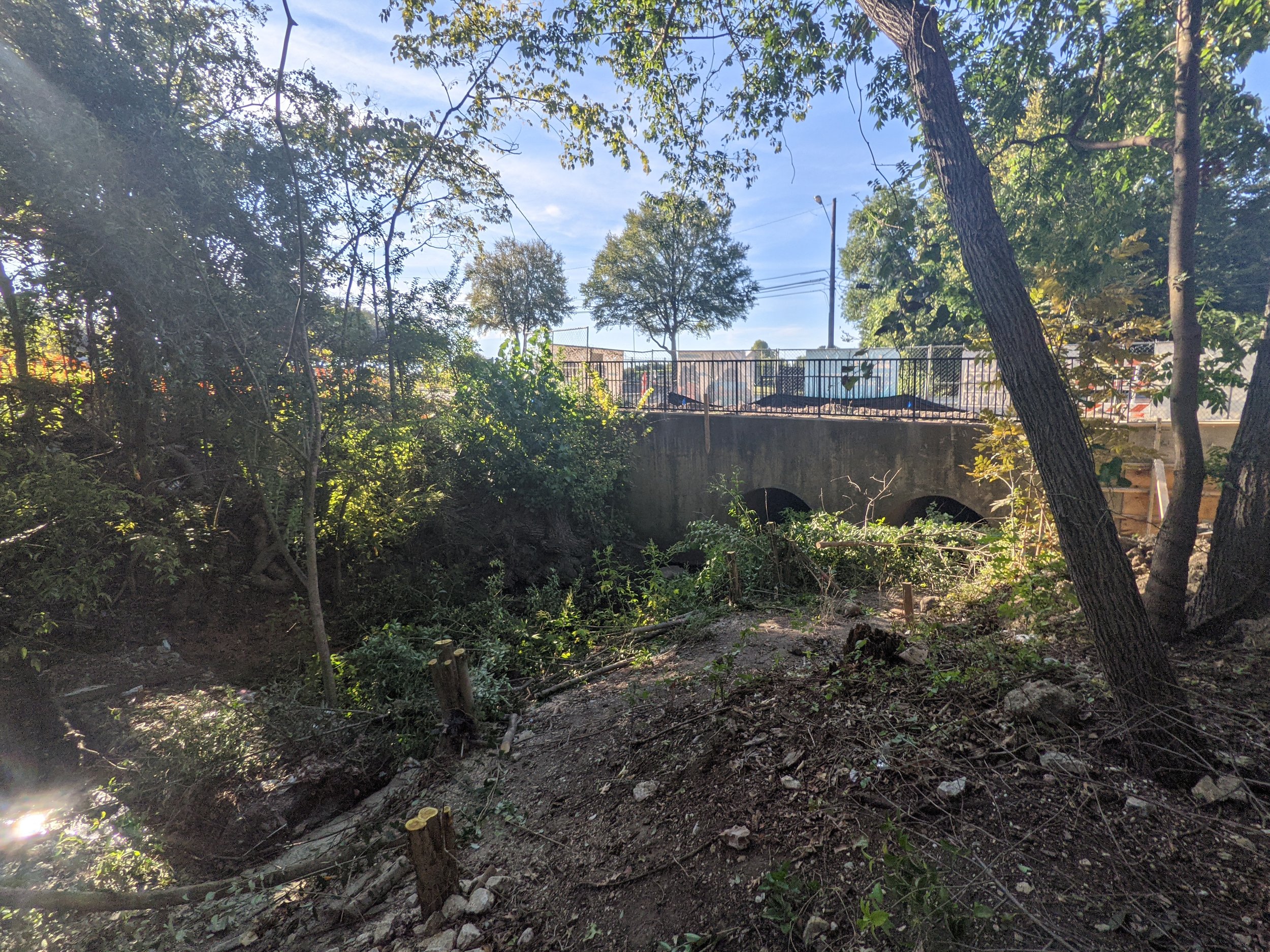


South Oak Cliff High School
On average, Dallas’ public school campuses have only 7% tree canopy coverage. The Cool Schools initiative, led by Texas Trees Foundation, addresses this lack of trees by increasing future canopy coverage to 30% at selected campuses. Studio Outside partnered with the Texas Tree Foundation to provide landscape plans tailored to the specific needs of each campus, including new playgrounds, outdoor classrooms, and loop trails that promote the health and well-being of students.
Getting hands-on in this effort, Outsiders spent a day in November of 2021 helping students at South Oak Cliff High School plant 70 trees. SOC High is one of the campuses within the Cool Schools Initiative and happens to be across the street from SOC Renaissance Park. Texas Trees Foundation will water these trees until established, and within a few years, the trees will shade the campus. Over the years, students and Outsiders alike will get to look back and see the difference they helped make.

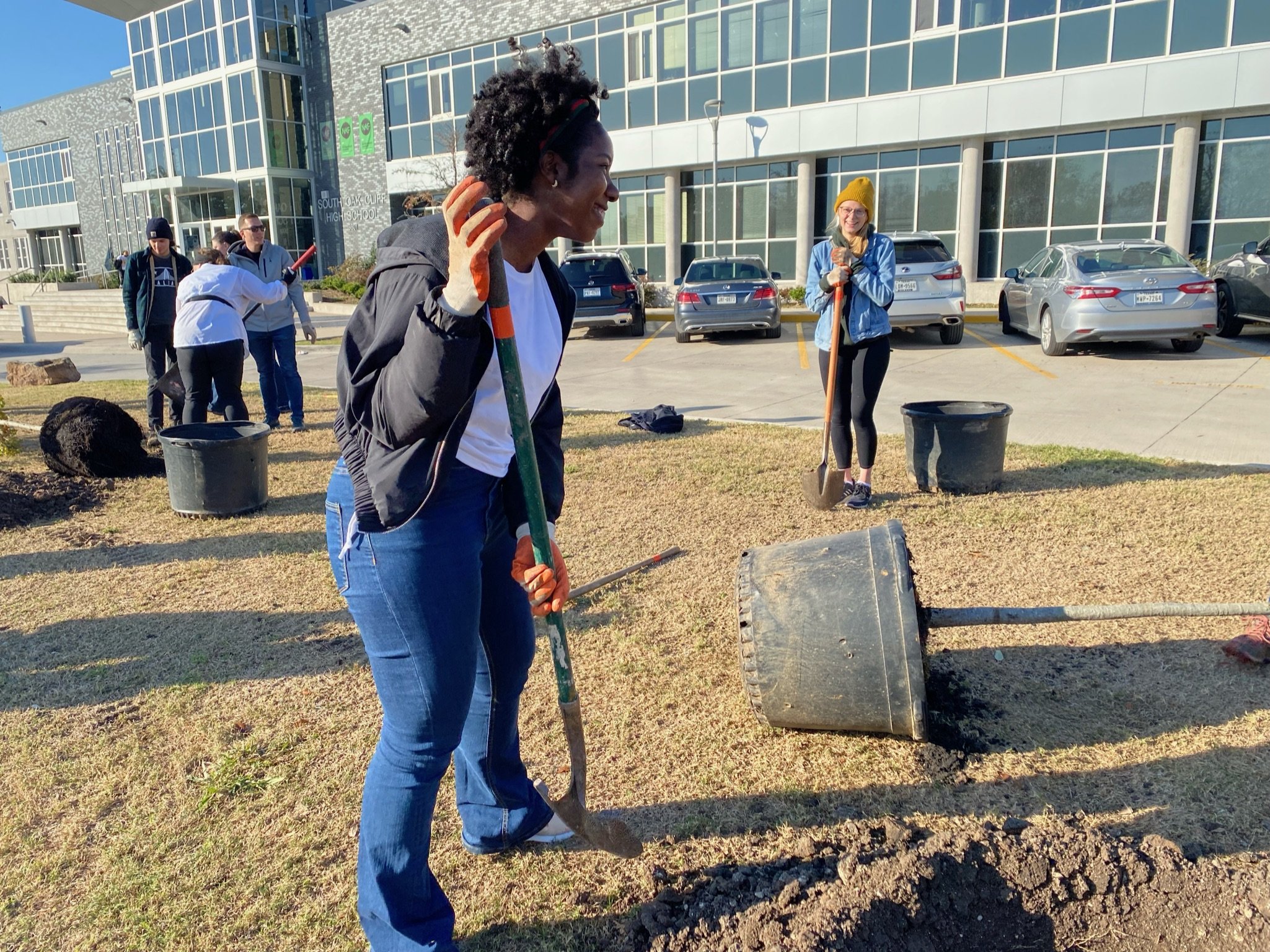


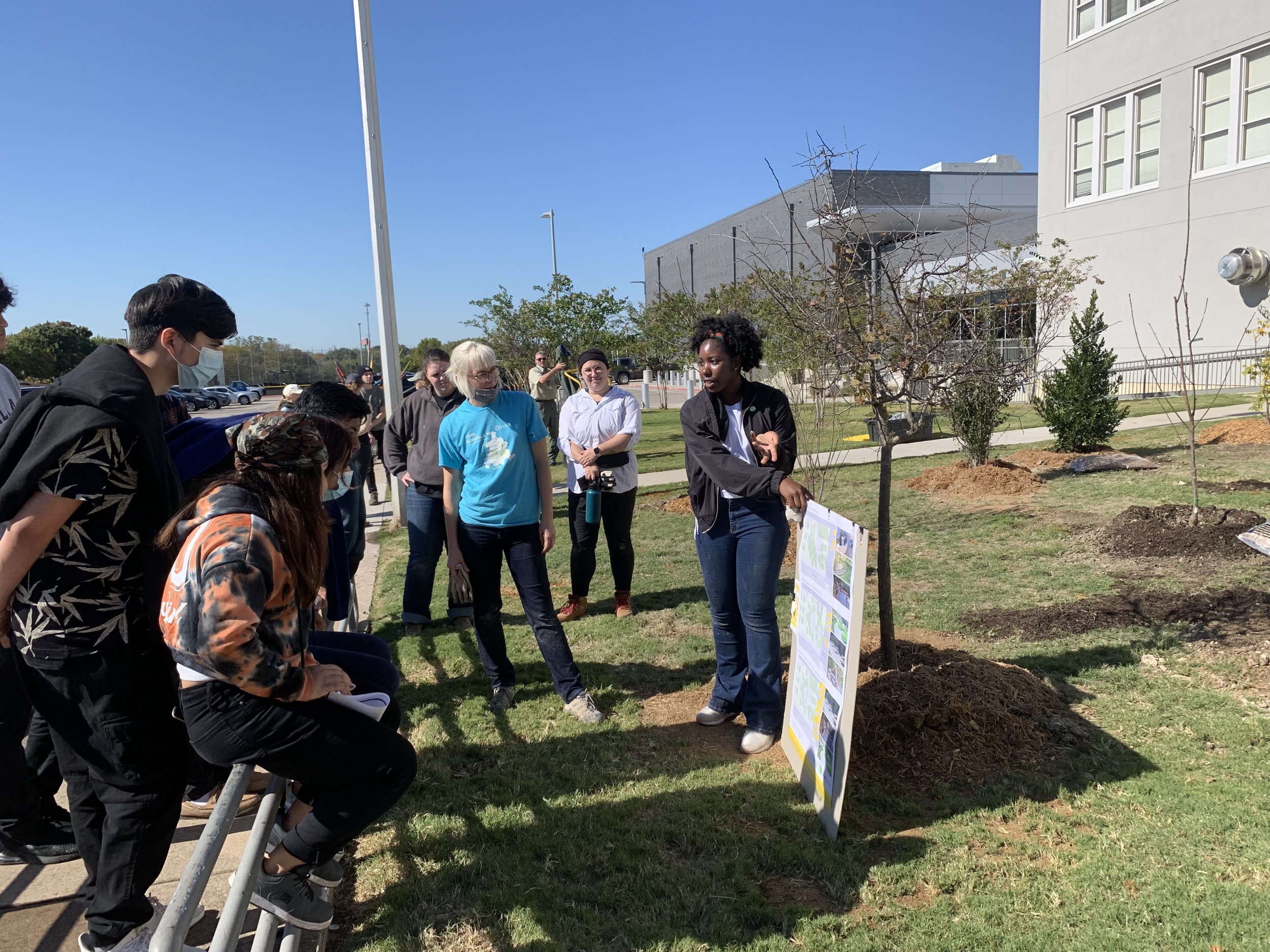
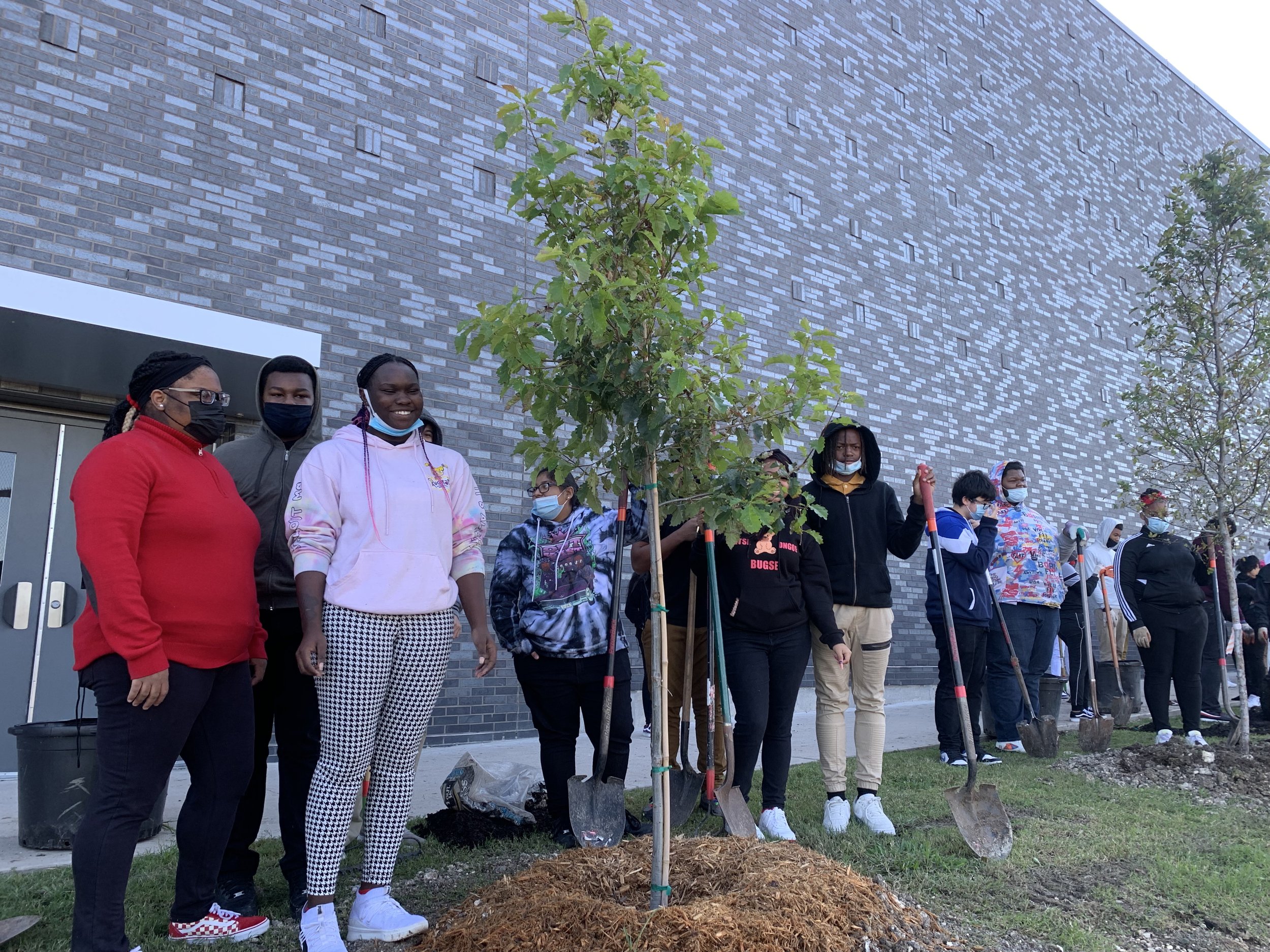
Exposition Park Neighborhood Clean Up
Studio Outside's office is located in Exposition Park, a neighborhood of hundred-year-old, former industrial brick buildings nestled between Deep Ellum and Fair Park. The fabric of the neighborhood is cut in half by Interstate 30, an infamous divider in Dallas. Each year while the State Fair is in session, Exposition Avenue comes to life with a steady stream of pedestrians on their way to the fair, but many of them must travel under the Interstate 30 overpass - a domain of litter, tall chain link fences, and overgrown hackberry trees obstructing the sidewalk. No governmental body maintains this area, so Studio Outside decided to conduct an annual clean up before The Fair begins to create a more welcoming environment not just for the fairgoers but also everyone who lives and works in Exposition Park.
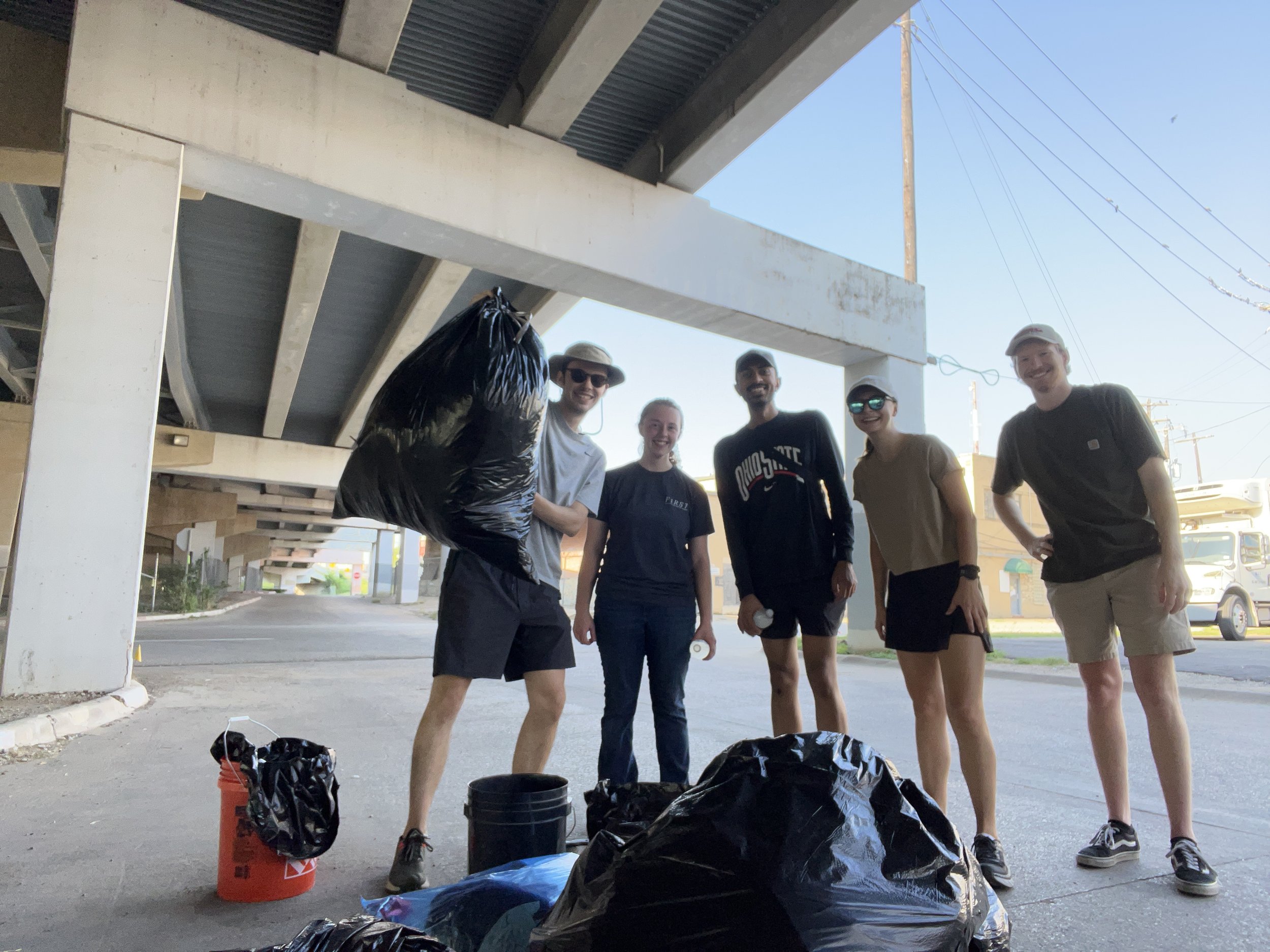

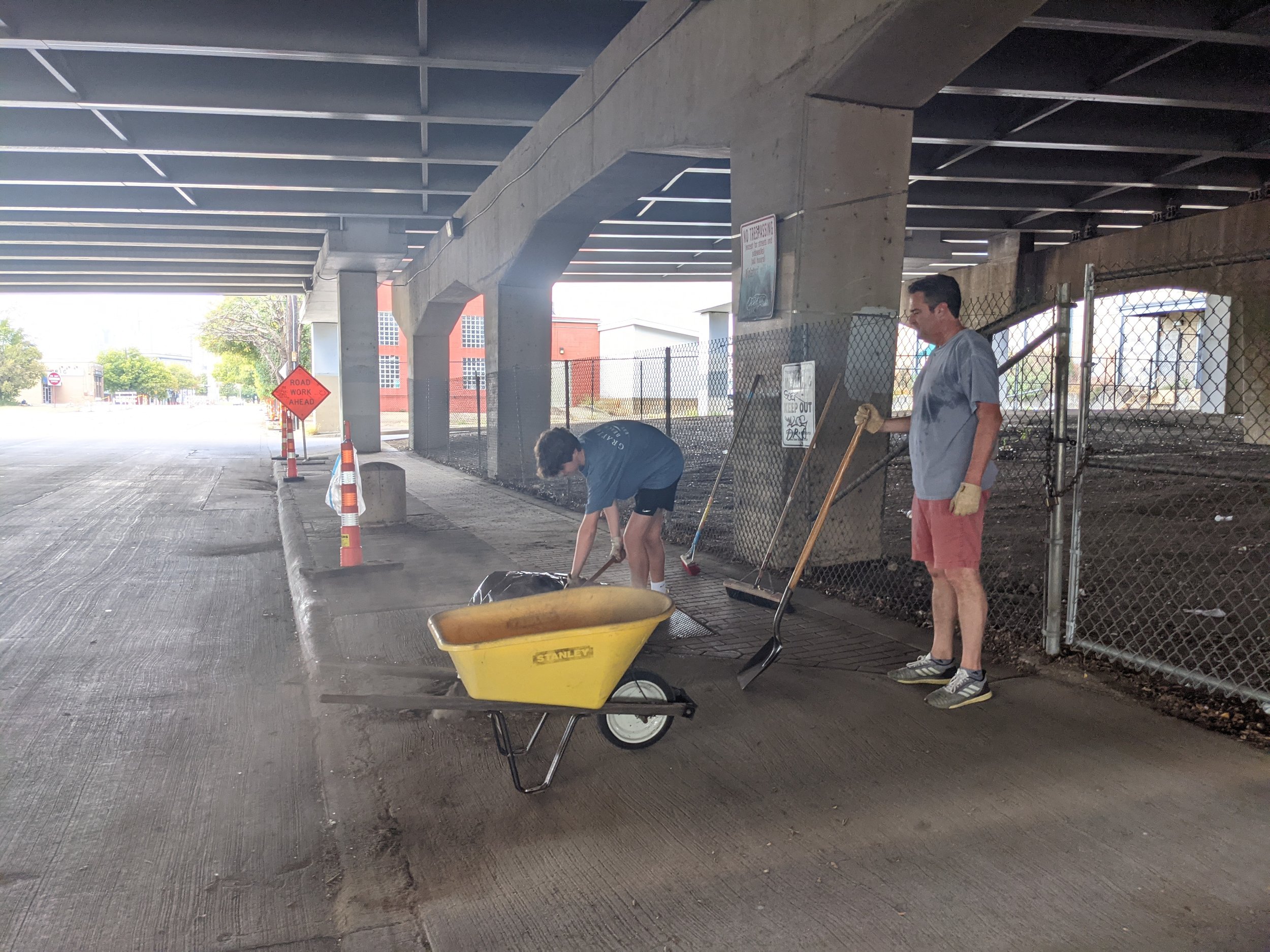

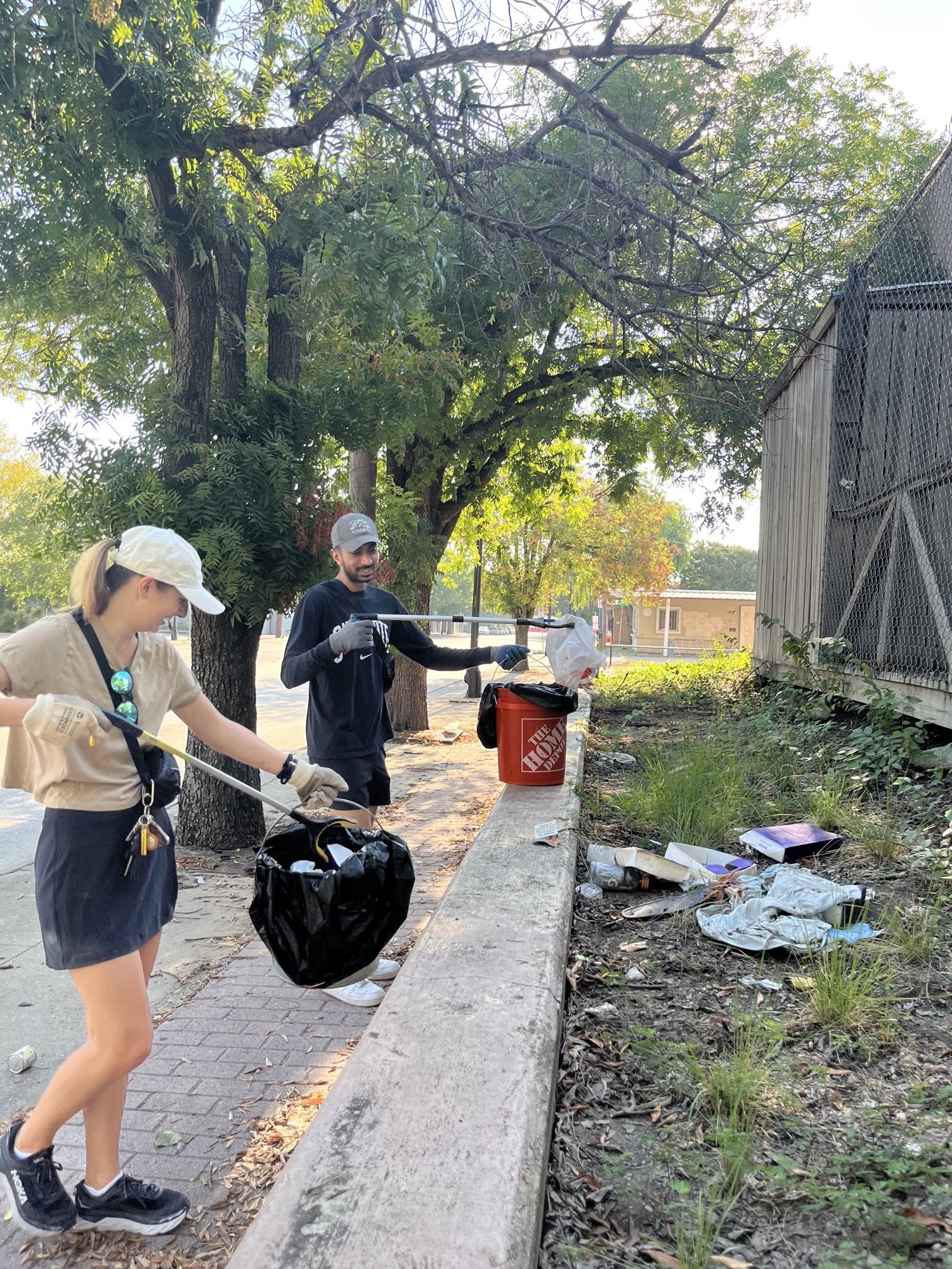
Continuing Efforts
The Studio Outside team is no stranger to the Twelve Hills Nature Preserve in North Oak Cliff, with many Outsiders serving on the board and doing design work there over the years. Our office is participating in a volunteer effort to adopt a ‘prairie ring’ of about 20 feet in diameter and transform it into a Blackland Prairie inspired garden. Blackland Prairies once covered all of Dallas, but only .03% of the original Blackland Prairie remains, making every bit left significant. Within the ring, Studio Outside is going to remove invasive species, and plant grasses and wildflowers that likely thrived on the same plot of land 200 years ago. Over time, the various rings will grow and connect into a larger prairie habitat.

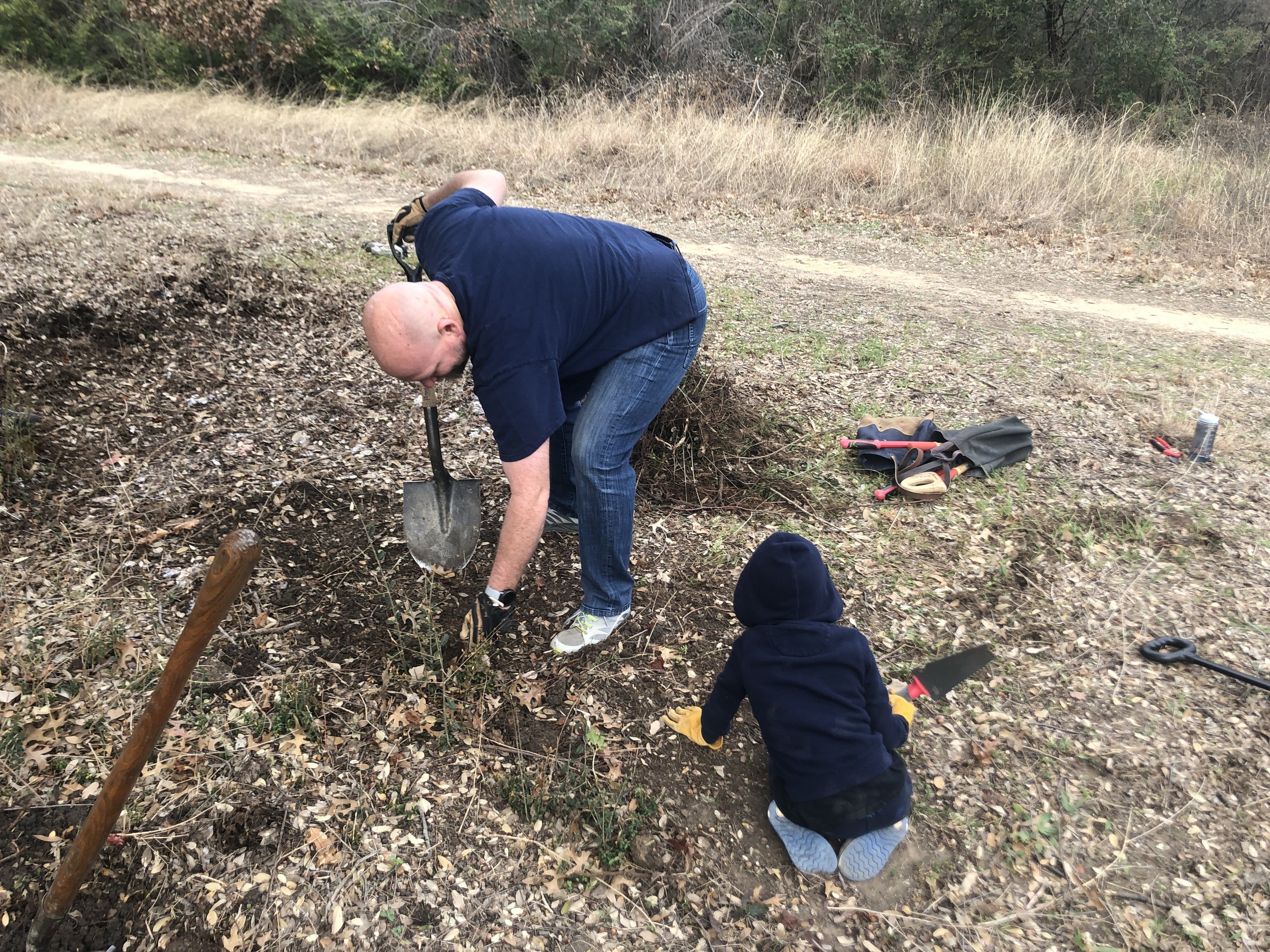
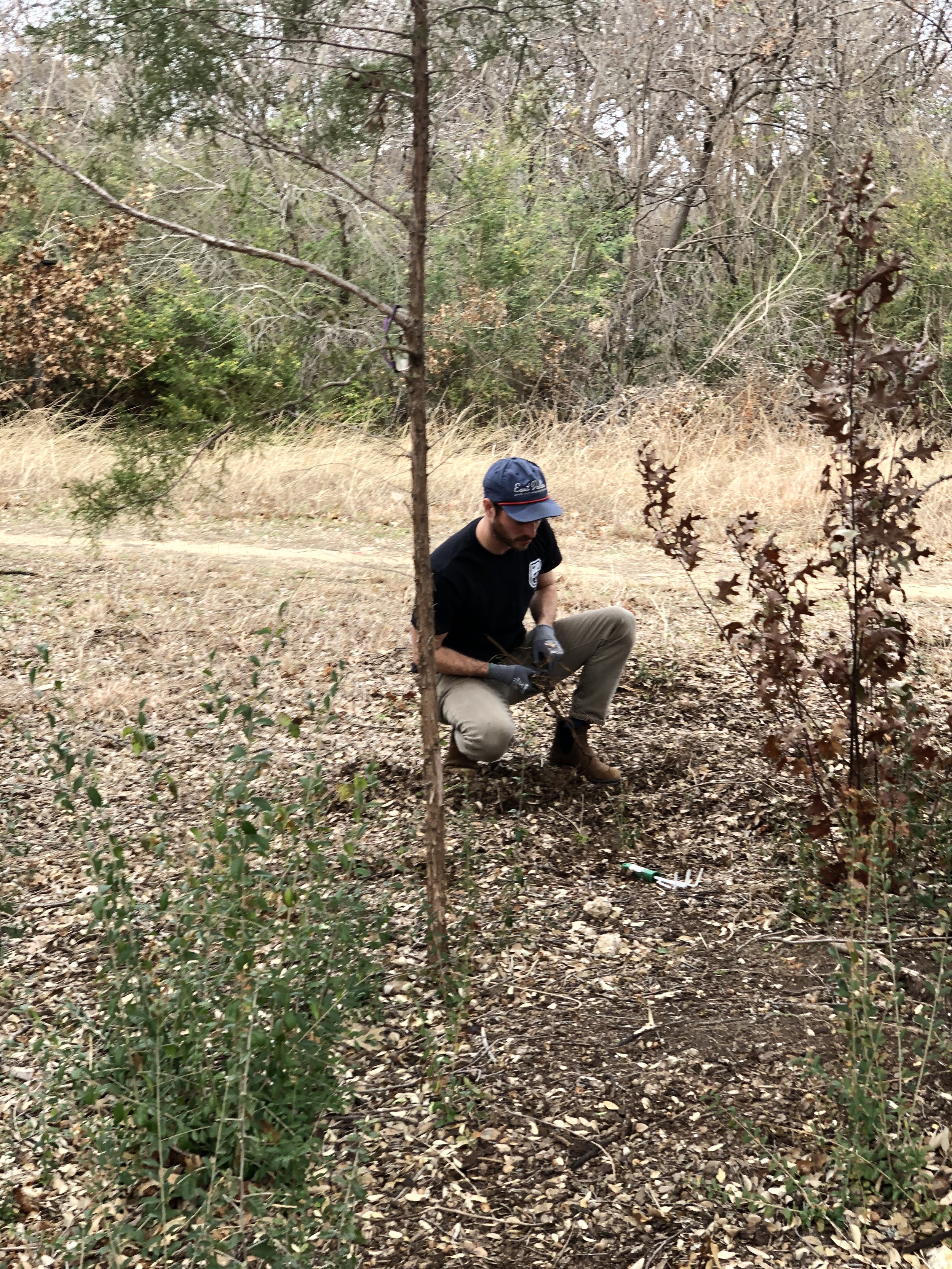
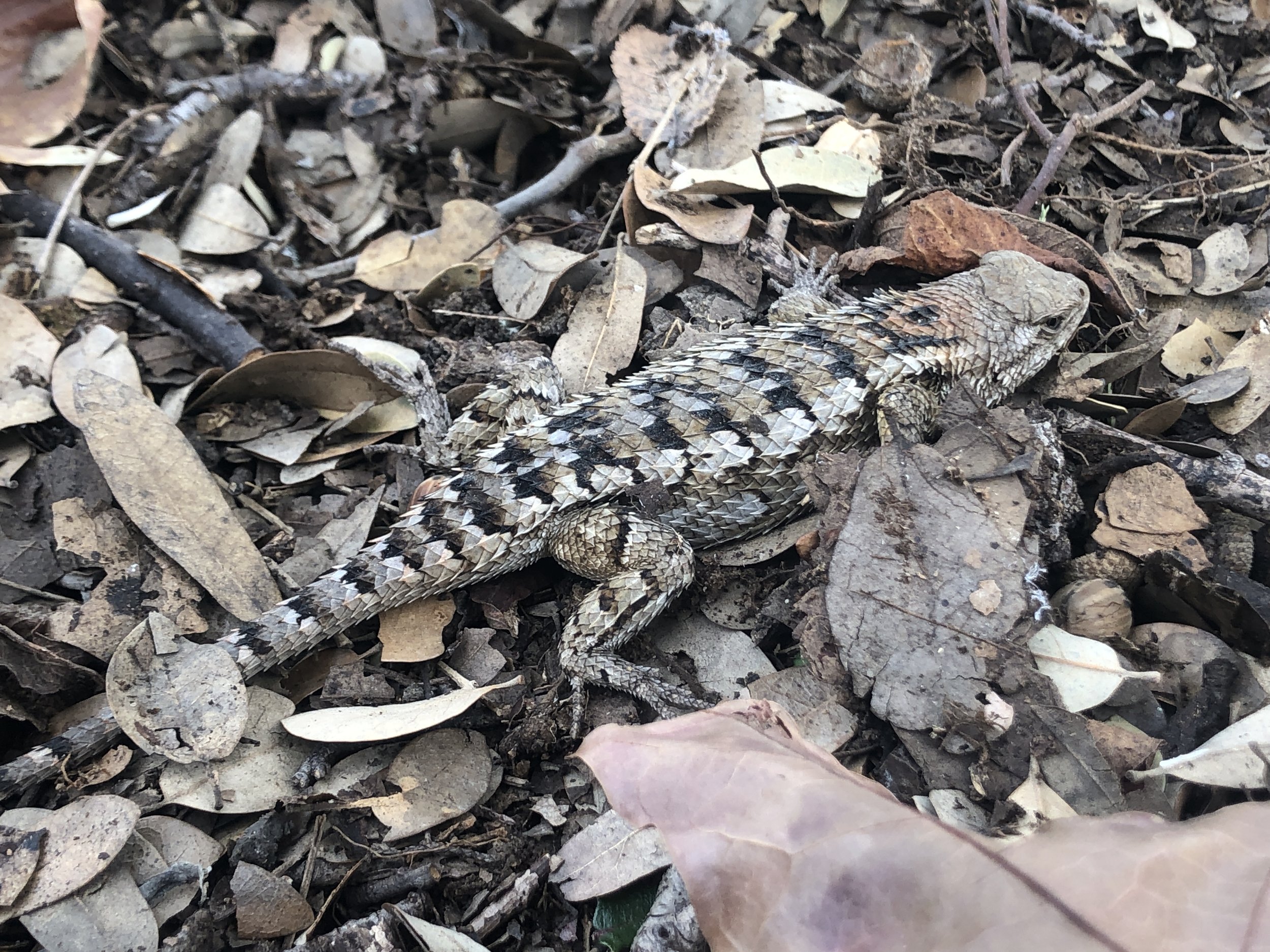
Studio Outside cherishes volunteer activities like these to give back to the community and educate individuals about the importance of maintaining green spaces. We are excited to see what other opportunities 2023 presents us.
For more information, please visit:
https://www.nature.org/en-us/about-us/where-we-work/united-states/texas/




